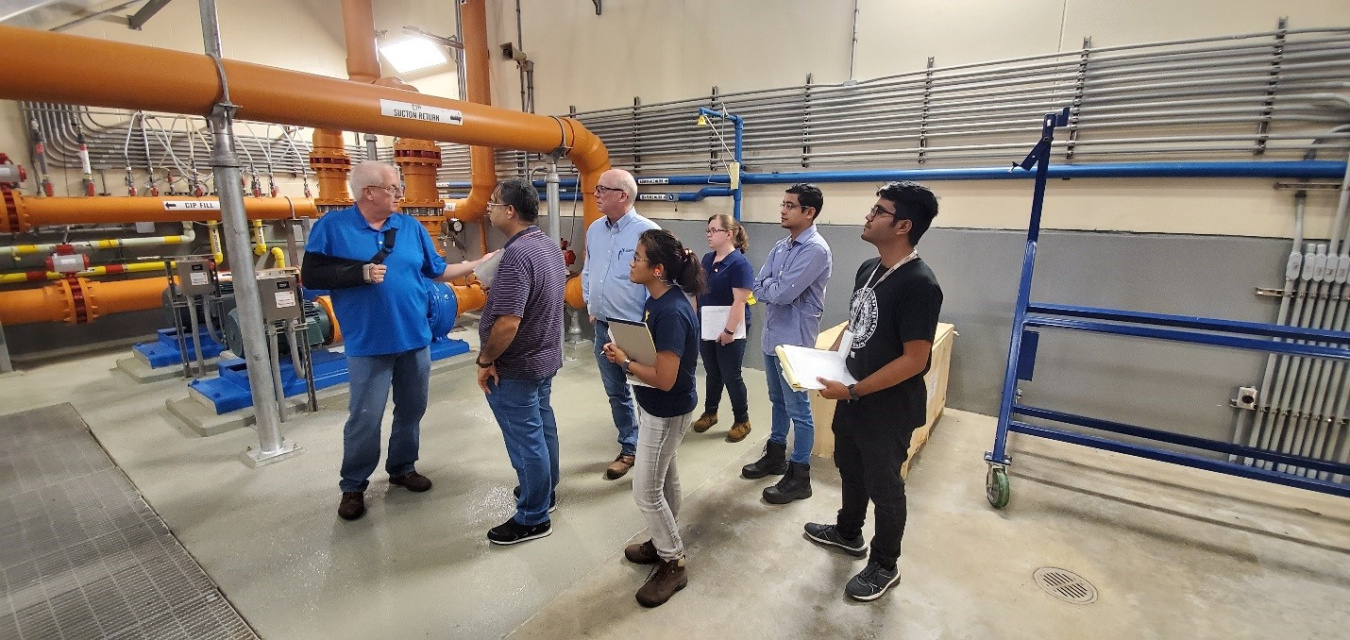Expanding Efficiency in West Virginia’s Industrial Sector
May 12, 2020
This photo is of WVU students discussing a wastewater project at the Morgantown Utility Board with Dr. Gopala. Photo credit: WVU Manufacturing Extension Partnership, 2019.
West Virginia’s industrial sector is the state’s largest energy consumer, accounting for almost 44% of statewide energy use in 2017, according to the U.S. Energy Information Administration. To identify opportunities for energy savings in the sector, the West Virginia Division of Energy (WVDOE) used funding from the U.S. Department of Energy’s State Energy Program (SEP) to provide energy assessments to the state’s industrial facilities.
To date, WVDOE reports that more than 55% of energy efficiency recommendations have been implemented, resulting in 10 million kilowatt hours and 60,000 MMBtu of energy saved across the sector. Additionally, West Virginia businesses have saved $650,000 in energy costs.
SEP provides funding and technical assistance to states, territories, and the District of Columbia to enhance energy security, advance state-led energy initiatives, and maximize the benefits of decreasing energy waste. SEP emphasizes the state’s role as the decision maker and administrator for program activities within the state that are tailored to their unique resources, delivery capacity, and energy goals.
WVDOE collaborated with West Virginia University (WVU) to take advantage of the touchpoints to the industrial community established by the university. The collaboration also allowed WVU engineering students to benefit from hands-on training and job placement opportunities. WVU is host to one of the 31 DOE-sponsored regional Industrial Assessment Centers (IAC) that receive funds for industrial and manufacturing operators to improve productivity, reduce waste, and lower energy costs through energy assessments. To date, more than 170 assessments have been performed on West Virginia facilities that fall within IAC energy consumption guidelines.
There are many facilities in West Virginia that do not meet IAC consumption criteria. SEP funding has helped WVDOE fill this gap and provide an additional 104 assessments to operations that fall above or below IAC criteria. These efforts have also increased industry awareness of and engagement with the WVU IAC and other statewide energy saving initiatives.
WVU students designed a database platform to catalog the industrial marketplace in the state. They also hosted workshops, training, and technical assistance opportunities for industrial facility owners and managers. Workshops oftentimes concluded with real time analysis of facilities to develop site specific energy efficiency, agile manufacturing, and quality management recommendations.

